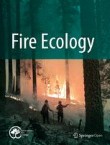Fire Ecology is the official journal of the Association for Fire Ecology.
Guiding principles for transdisciplinary and transformative fire research
Managing landscape fire is a complex challenge because it is simultaneously necessary for, and increasingly poses a risk to, societies and ecosystems worldwide. This challenge underscores the need for transfor...

